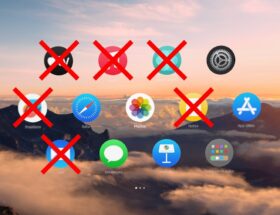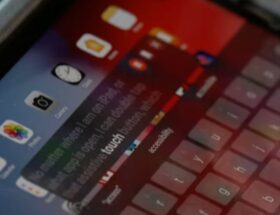Apple is ahead of the industry with its M-series chips. Image credit: Apple
 3 Facebook x.com Reddit
3 Facebook x.com Reddit
Apple executives believe that by developing its own Apple Silicon chips and AI, the company now has a significant advantage over traditional chip makers that have to serve a wide range of markets and customers.
Apple’s vice president of Mac Product Marketing Tom Boger and vice president of Platform Architecture Tim Millett discussed the new M4 line of chips used in Apple’s latest product updates in an interview with The Indian Express. The company believes that designing its own chips gives it a “massive strategic advantage,” Millett said.
“We’re not a silicon company,” he added, describing Apple’s advantage. “We don’t build chips and sell them to other [companies].”
By creating chips custom-made for the devices they’ll go into, the company avoids compromising on overall performance. Boger added that “no other platform can match our performance per watt. That’s a tangible benefit to users.”
Industry-leading chip innovation
Boger noted the dramatic year-over-year performance gains as Apple Silicon releases successive generations, outpacing the rest of the industry. Apple says the new M4 offers customers “the world’s fastest CPU core, delivering industry-leading single-threaded performance.”
The two executives say Apple Silicon’s success isn’t just about delivering speed while using minimal power. “We take advantage of three core pillars — architecture, design, and process technology,” Miller said.
“Our fourth tool, really our secret weapon, I think, is our ability to co-design these amazing chips with the systems teams and product designers as they envision what’s possible.” Miller cited the new M4 Mac mini as an example.
“We had the opportunity to come together and create this incredible new platform with the design team,” he told the newspaper. “This machine wouldn’t have been possible without that collaboration. And that’s really what Apple does.”
Miller noted that rival chipmakers “can’t just jump to the latest cutting-edge technology like second-generation, three nanometers, but we (Apple) are capitalizing on it in a way that we think is worth it. It benefits us, our products, and our customers, and we’re trying not to miss a beat.”
Boger added that it’s rare to see “the pace of innovation year after year,” noting that the first Apple Silicon chip debuted just four years ago. “That’s a promise. That’s a commitment that we make to our teams to deliver innovation as it’s available to us,” he said.
The Rise of the Neural Engine
Commenting on the rise of AI in PCs and Apple’s answer to Apple Intelligence, Boger noted that “intelligent” features have been in the Mac for years. He noted that Apple first included the Neural Engine in its iPhone chip designs in 2017.
The Neural Engine and M-series chips are attracting more customers with intensive workloads. Image credit: Apple
Millet added that “it was inspired by our understanding of the importance of computational photography. We were seeing amazing research from people at the University of Toronto showing [that] these new neural networks were able to recognize images beyond human capabilities, or at least match them, and they were on a clear trajectory.”
“And so we jumped at the opportunity to build that built-in capability into our camera processors for the phone,” Millet said. Boger added that the Neural Engine was a core part of the first M1 chip.
“We have a great architecture for AI, and we also have developers taking advantage of Apple silicon to deliver intelligent features to our customers,” he said. “So the M-series chips have always been built for AI.”
Boger said his team saw an “interesting paper” in 2017 that discussed transformer networks, which are now the engine behind the large language models (LLMs) used in AI. Boger’s team saw that the technology could have a big impact on the Neural Engine and implemented them in the first M-series chips.
“It shows how hard we spend all our time trying to figure out where the ball is going,” Miller said. “We try to be there before it gets there.”
Innovation Driven by Users
In an interview, Boger said Apple Silicon continues to push the boundaries of performance and power efficiency “because that’s what our customers do.” He cited the M4 MacBook Pro line as an example.
“For example, you run your most demanding workload while it’s plugged in, and then you unplug it [and] it’ll give you exactly the same performance.”
Noting the addition of the M4 Pro and M4 Max chips, Millett said memory bandwidth is a key differentiator over the regular M4. “The M4 Max has effectively twice the memory bandwidth of the M4 Pro, [which] will help someone who’s really pushing the really, really big model.”
Millet said Apple is working closely with software partners “to find all the best opportunities to accelerate not just the general benchmarks that we’re often measured on, but more importantly the workloads that we’re actually delivering to our customers.”
“We know what the hardware system and the thermal design is going to look like, and we understand what the process nodes are, and we’re aggressively looking for our best silicon options,” Millet said. “I’ve been doing this for over 30 years [and] this is the best situation.”
Follow AppleInsider on Google News









